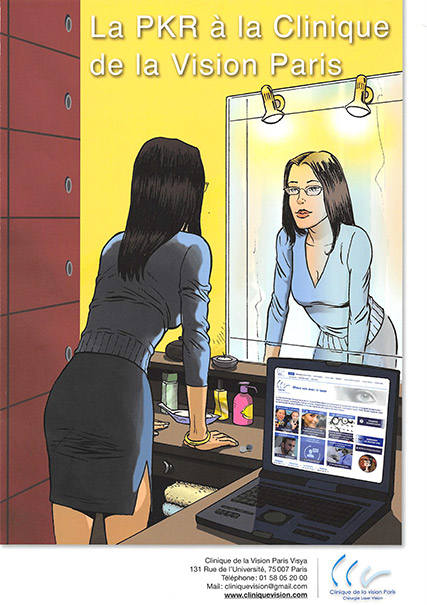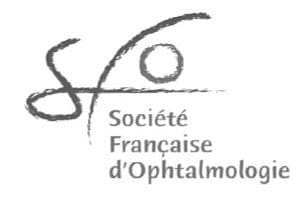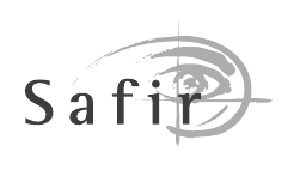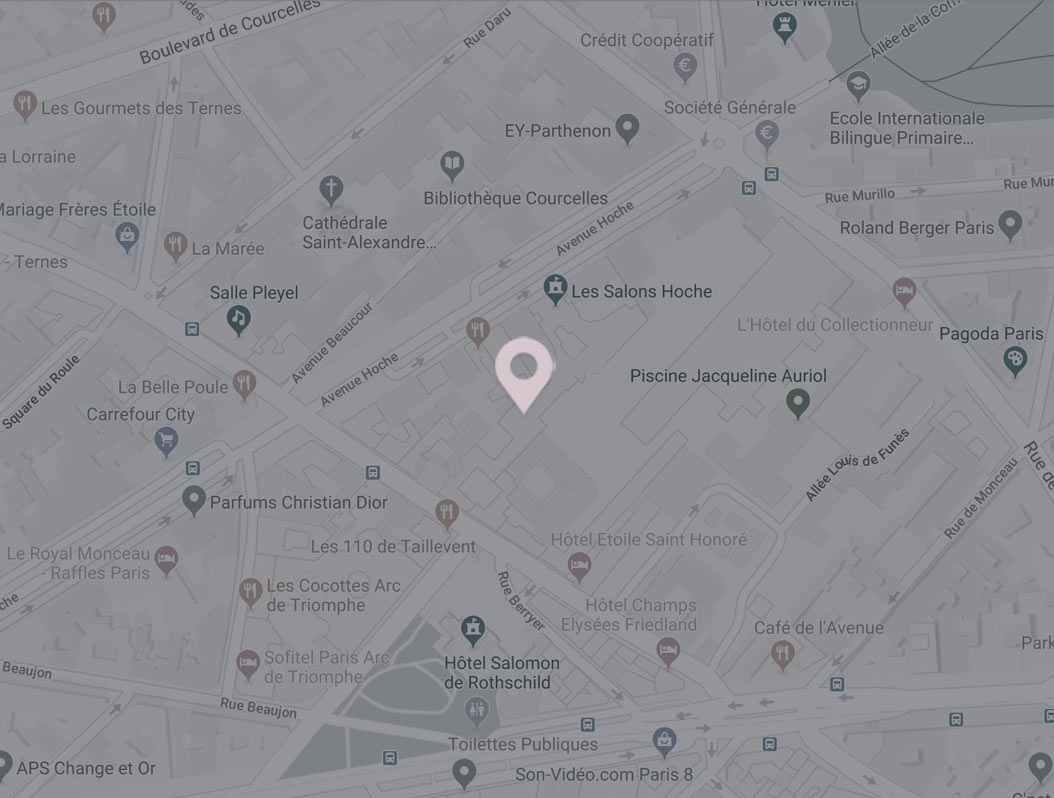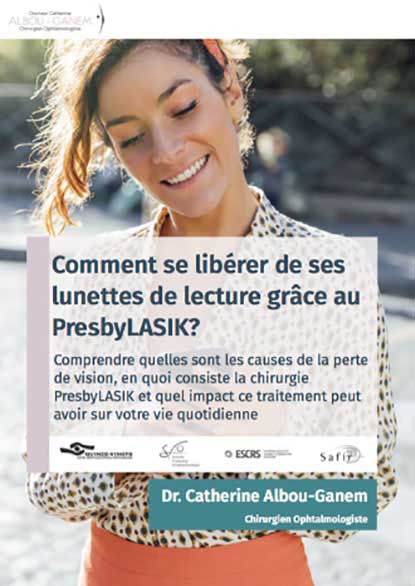Short-sightedness
An eye condition that makes it hard to see objects in the distance
Summary
- Short-sightedness is when the eye is too long
- Most people correct it with glasses and contact lenses
- Eye surgeons have corrected short-sightedness for 40 years
- Laser correction for short-sightedness is permanent
- We can use LASIK, PRK, or SMILE to correct short-sightedness
An introduction to short-sightedness (myopia)
The myopic eye is sometimes too long and sometimes has a cornea that is too curved. Together, eye length and corneal shape behaves like a system that is too convergent.
The eye projects distant images in front of the retina and you see them blurred. On the other hand, you see objects that are near vision without effort. Affecting about one-third of adults in Europe and North America, myopia is the most common visual defect, and its prevalence is increasing.
It usually appears at school age (in childhood or adolescence) and evolves into early adulthood, where it tends to stabilize. Some strong myopia, called myopia “diseases”, can evolve throughout life.
Short-sightedness (myopia) symptoms and lifestyle impacts
The nearsighted eye sees close-up, and blurred beyond a certain distance. This distance, beyond which the objects observed become “blurry”, makes it possible to quantify the degree of myopia, which is usually expressed in diopters (D).
The closer this distance is, the stronger the myopia. However, it is enough to be nearsighted of more than 1 diopter to see blur at more than 2 meters and not to have the right to drive.
What is LASIK? What is monovision?
BEFORE AND AFTER


Emmetropia, ametropia, refraction, presbyopia
The emmetropic eye has normal vision without optical correction. It is an eye whose anatomical qualities allow the image of a fixed object to form directly on the retina. Only 14% of the French are emmetropic.
An eye whose anatomical qualities are non-compliant is called ametropic. The image of an object does not form on the retina.
The different ametropia are myopia, hyperopia or astigmatism. Their importance is determined by the refractive power of the eye. That is, the nature and power of the optical correction that allows the image of an object to form on the retina of an ametropic eye.
The analysis of your vision, measured in tenths, and your optical correction measured in diopters, negative for myopic ametropia and positive for hypermetropic ametropia, is called refraction.
Short-sightedness (myopia) causes
- Originally, we considered myopia to be genetic
- Today, we know that genetics is responsible for 3% of myopes. More than 100 genes are responsible for myopia but we do not know which ones are decisive
- Reading at too close a distance is a factor but the cause is not clear
- Environmental factors:
- Exposure to daylight protects the vision. Being deprived of daylight leads to deformation of the eye and myopia
- In Australia, which is a highly educated country, very few children are short-sighted because they spend a lot of time outdoors:
- If 1 child has 2 nearsighted parents he will have 60% risk of becoming myopic if he spends a short time outside
- If 1 child has 2 myopic parents he will have 20% risk of becoming myopic if he spends 2h / day outside
What light intensity and wavelength?
Humans see only three colours – Red, Blue and Green. Every other perceived colour is a combination of these. Blue light is the most present and intense wavelength outdoors. It protects against myopia because it stimulates the secretion of dopamine by the retina. Dopamine maintains the round shape of the eye. If the light is too weak or has too little blue light, then red light dominates, the retina secretes less dopamine and the eye lengthens. The combination of time spent outdoors, blue light and dopamine help the eye maintain its round shape.
Can we slow down the development of myopia?
- Atropine 0.01% would be effective but we lack perspective and these eye drops only exists in Singapore and Japan
- Taiwan has introduced a program since 2010: children have less post-school homework and do more than 2h / day of activities outside. As a result of this program there has been a myopic reduction of 10% per year
- Currently 90% of Taiwanese medical students are nearsighted
It is therefore necessary for children to play outdoors to reduce chances of them developing myopia.
Short-sightedness (myopia) examination at Clinique de la Vision
A preoperative assessment is essential in refractive surgery. It allows your surgeon to choose the most appropriate surgical technique for you (which may be PRK, LASIK, SMILE, or implants) and to check the absence of contraindications.
Indeed, even if refractive surgery corrects visual defects (myopia, hyperopia, and astigmatism), compliance with the contraindications avoids post-operative complications. The quality of the preoperative indication determines the quality of the result. This consultation also helps to answer your questions.
At Clinique de la Vision, for example, a preoperative consultation includes:
- measurement of ametropia (visual defect) to be corrected by refraction analysis
- the verification of the “dominant” eye (or “director”) essential when correcting symptoms of presbyopia
- the complete ophthalmic assessment with measurement of the intraocular pressure, examination of the fundus and especially the analysis of the transparency of the lens
- The analysis of corneal morphology (curvature, shape, thickness) thanks to corneal topography eliminates the contraindications to laser surgery and to choose the most appropriate surgical technique for the patient
- Aberrometric examination analysis of the optical quality of the eye
- Calculation of the implant is performed if lens surgery is considered
- Finally, other explorations can be done depending on the context.
It is only at the end of this assessment that a surgeon can make a recommendation. They can then choose the most suitable refractive surgery technique for you.
Finally, the surgeon must clearly explain the advantages, the possible undesirable effects and the expected results of their recommended procedure.
Short-sightedness (myopia) treatment at Clinique de la Vision
Surgeons can correct myopia with several laser techniques including:
- PRK: In PRK, the surgeon performs excimer laser photoablation on the surface of the cornea after removal of the epithelium
- LASIK: In LASIK, the surgeon performs excimer laser photoablation in the thickness of the stroma under a femtosecond laser-cut corneal flap
- SMILE: In SMILE, the surgeon performs the correction of myopia by ablation, through a mini-incision, a femtosecond laser cut refractive lens
- ICL: In the case of strong myopia, surgeons can implant a contact lens in the eye.
AFFILIATIONS & MEMBERSHIPS
We are pleased to be associated with the following organisations
TÉMOIGNAGES

“Le jour de l’intervention, je n’ai ressenti aucune gêne et aucune douleur. Après 2 h de repos j’ai pu reprendre mes activités tout à fait normalement. Deux jour après l’intervention il ne subsiste aucune gêne. Je tenais également à insister sur le fait que, contrairement aux idées reçues, ce n’est pas une intervention réservée aux personnes jeunes. J’ai 59 ans et c’est une totale réussite.”

“Le Docteur Albou-Ganem m’a opérée de la presbytie il y a un an, et je suis très heureuse du résultat, plus besoin de lunettes pour lire, même ma vue de loin est bonne. C’est un vrai soulagement pour moi, car j’ai hésité pendant un moment avant de sauter le pas, difficile de prendre une telle décision.”

“Après une opération rapide et sans douleur j’ai quasiment immédiatement remarqué une nette amélioration de ma vue de près et de loin. Au fil des semaines cela n’a fait que se confirmer et je n’ai jamais reporté mes lunettes depuis! Je ressens une telle liberté dans ma vie de tous les jours ainsi qu’une impression d’avoir rajeuni que je recommande à toute personne de le faire sans hésitation si cela leur est possible!”

“Docteur Catherine Albou-Ganem l’a immédiatement dissipée. Contact et confiance se sont installés immédiatement. Ses explications ont été claires, précises et je peux dire que le Jour J de l’opération, j’y suis allé les yeux fermés! Pour les rouvrir quelques heures plus tard avec la vue parfaite d’un homme de 30 ans!”

“L’opération a été un franc succès. J’ai maintenant 10/10e, sachant qu’auparavant j’avais une assez forte myopie (-5 et et -4,5) et un léger astigmatisme.”

“Vous m’avez opérée il y a maintenant plus de deux ans. A part pour conduire et regarder la télévision, et encore… je n’ai plus besoin de lunettes, moi qui n’ai jamais rien vu… Il m’a fallu plusieurs mois pour que ma vue s’adapte. Je tenais donc à vous remercier de cette opération qui a changé ma vie! Plus d’ulcères douloureux dus aux lentilles et la possibilité d’ouvrir les yeux sous l’eau et d’admirer les jolis poissons!”
We have replaced the images of real patients who provided these testimonials to protect their privacy.
About the author
Doctor Catherine Albou-Ganem
Consultant Ophthalmic Surgeon
I am Catherine Albou-Ganem and I am an ophthalmic surgeon brought up in a family of ophthalmologists. I had a passion for ‘the eye’ and ‘the vision’ from my childhood. This was the subject of my first presentation at school.
Today, I share my refractive surgery activity between the hospital and the private sector.
I am proud to have contributed to the development of new laser refractive surgery techniques that can correct vision defects with accurate, effective and safe results when respecting the indications.
 Skip to content
Skip to content


